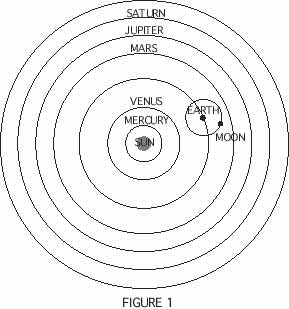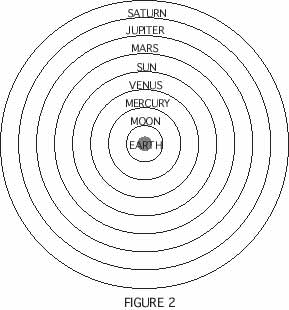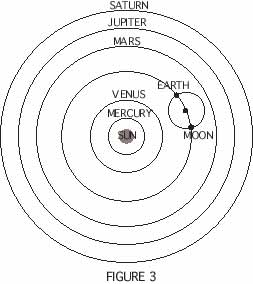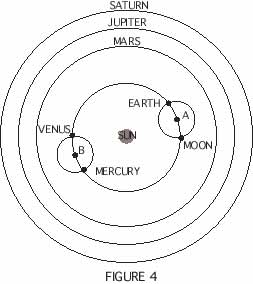|
科学哲学ニューズレター |
![]()
No.20, April 8,1998
● Kazuyuki Ito: Sun Worship and HeliocentricismThis paper was read at the international symposium "Europa - Giappone: giornate di studio su Giordano Bruno e il pensiero del Rinasscimento" (Tokyo, 30 March - Saitama, 31 March - Kyoto, 2 April 1998).
● New Students
● Our Activities in 1997
Kazuyuki Ito: Sun Worship and Heliocentricism
This report has been read at the international symposium "Europa - Giappone: giornate di studio su Giordano Bruno e il pensiero del Rinasscimento" (Tokyo, 30 March - Saitama, 31 March - Kyoto, 2 April 1998).
(1) Abstracts in English and in Japanese
(2) Full Text
(1)Abstract of "Sun Worship and Heliocentricism"
1. The Yates Thesis
In Giordano Bruno and the Hermetic Tradition (1964), Frances Yates
proposed a new approach to the scientific revolution. She claimed that
it consisted of two phases. The phase consisting of 'an animistic universe
operated by magic' led to the second phase, a 'mathematical universe operated
by mechanics'. One of her arguments is that sun worship led to the shift
in cosmology from geocentricism to heliocentricism. This paper examines
the development of theories of planatary order and heliocentricism in
Renaissance philosophers under the influence of Platonism.
2. Copernicus and Ficino
When Nicholaus Copernicus presented a planetary theory based upon heliocentricism,
as the reason for insisting upon the sun's position at the center, he
explained the movements of planets according to this new planetary order.
He also remarked that the sun is called the ruler of the universe by some
writers, including Hermes Trismegitus. Consequently, Yates insisted that
sun worhsip strongly influenced Copernicusユ thought on the universe.
In De sole et lumine, Marsilio Ficino presented the sun as the image of God, and considered its light as providing the power of life to all material and spiritual things in the universe. However, his ordering of the planets was traditional: the earth occupies the central point and the sun takes the middle orbit of the seven planets. In his philosophy the sun had an important role as the image of God, but this did not signify that the sun was physically at the central point of the universe.
3. New Natural Philosophy
Bernardino Telesio proposed an understanding of nature according to its
own characteristics and developed a system of natural philosophy based
on perception through the senses. He posited two active principles of
heat and cold, and a third passive principle of matter. The conflict and
cooperation of heat and cold generate all terrestrial physical processes.
Since the sun, as the source of light and heat, is the origin of all life,
motion is appropriate to it. The sun's central role in his system of natural
philosophy required its local motion.
Francesco Patrizi da Cherso developed a new theory of space which proposed an infinite and uniform space as the metaphysical basis for explaining natural events, denying the existence of the fifth element and heavenly spheres. The infinite void is filled with the light emitted from the sun. This light causes all events in the material world. Firstly, it produces the two principles of heat and cold, of which interaction provides the characteristics of matter. He admitted the rotation of the earth about its own axis, but denied its revolution around the sun. In Patrizi's system of natural philosophy the sun's central role does not necessarily correspond to its central physical position in the universe.
Giordano Bruno accepted Copenican theory and intended to elucidate its philosophical meaning. He rejected the existence of heavenly spheres and presented his own image of the universe as consisting of an infinite void and innumerable worlds. Each world consists of a sun and the planets revolving around it. The sun no longer rests at the center of the universe, but only at the central point of one system. Denying the existence of the fifth element forming celestial bodies, he rejected completely the hierarchical system of Aristotelian physics. The sun, like the earth, also consists of four elements and has lost its unique nature.
Cosmic homogeneity as a principle of natural philosophy led Bruno to posit his own version of the planetary system. In La cena de la ceneri, Bruno applied the principle of homogeneity to the positions of the earth and the moon. Since the moon is also one of the planets and achieves equality with the earth, the earth and the moon revolve at opposite sides of an epicycle. In De immenso, Bruno extended this equality to the other inner planets, Mercury and Venus, and gave them physical positions similar to those of the earth and the moon.
4. Conclusion
Although Ficino, Telesio and Patrizi argued a special role for the sun,
they all rejected heliocentric theory. The central role which the sun
had as the active principle in their philosophy did not necessarily correspond
to its spatial centrality in the universe, but required of it motion rather
than rest. Only Bruno accepted Copernican theory. However, since his universe
is infinite, the sun's central position is only for its own world, not
for the complete universe. Telesio, Patrizi and Bruno attempted to replace
the hierarchical structure of the traditional cosmos with that of uniform
space, according to the principle of homogeneity. As a result of this
homogenization of the universe, the spatial centrality of the sun lost
the significance that had been accorded in traditional cosmology.
「太陽崇拝思想と太陽中心説」要旨 伊藤和行
1.「イエイツ・テーシス」
フランセス・イエイツは,『ジョルダーノ・ブルーノとヘルメス伝統』(1964年)において独自の科学革命論を提出した.彼女によれば,ヘルメス主義の影響下になされた「魔術によって操作される物活論的宇宙」の成立こそ「機械学によって操作される数学的宇宙」観を導いたものとして科学革命の第一段階として捉えられるべきなのである.彼女はその論拠の一つとして,太陽崇拝思想が宇宙論革命の中核である太陽中心説への転回を導いたことを挙げている.本稿では,プラトン主義の影響下にあったルネサンスの哲学者たちにおける惑星体系理論と太陽中心説の発展について検討する.
2.コペルニクスとフィチーノ
コペルニクスは,地動説を提唱した際に,太陽が宇宙の中心を占めている理由として,惑星の不規則な運動の合理的な説明を主張するとともに,太陽が宇宙の支配者と呼ばれていることを指摘し,ヘルメス・トリスメギストスの名を挙げていた.このことからイエイツは,コペルニクスの宇宙論の背景には太陽崇拝思想があったと結論している.
フィチーノは『太陽と光について』において,神の像としての太陽を称賛し,その光を物体的および精神的存在に対して生命を供給するものと考えた.しかし彼の惑星の配置は伝統的であって,地球が中心を占め,太陽は七つの惑星天球の中の中間に位置していた.彼の哲学において太陽が神の似像として重要な役割を果たしていたことは,物理的な配置においても宇宙の中心であることを意味してはいなかった.
3.新しい自然哲学
テレジオは自然をその固有のレベルで理解することを主張し,知覚経験に基づく自然哲学の体系を展開した.彼の感覚的経験論では,能動原理として熱と冷が,受動原理として質料が措定され,熱と冷の対立と協力からすべての自然現象が説明されている.太陽は唯一の自然の光と熱の源泉として,あらゆる生命の源でもあるが故に運動がふさわしいのであって,テレジオにおいては自然哲学大系の中で太陽が持つ役割がその運動の根拠となっていた.
パトリツィは,第五元素と天球の存在を否定し,あらゆる自然現象を説明する形而上学的基盤として無限かつ一様な空間を措定し,独特の空間論を展開した.この無限空間を光の放射が満たしており,それから生命過程を含む物質世界のすべての現象が説明される.最初に光から導かれるのは,熱と冷という二つの原理である.熱という能動的な形相原理と,冷という受動的な質料原理の相互作用によって,物体の諸性質が導かれる.そして地球の自転運動を認める一方で,公転運動は否定した.彼の自然哲学における太陽の中心的な役割は宇宙空間における中心への配置には必ずしも対応していなかった.
ブルーノは,太陽中心説を受け入れ,その自然哲学的意味を解明しようとした.彼は天球の存在を否定し,無限の空虚と無数の世界から構成される無限宇宙という独創的な宇宙像を提示する.太陽はもはや宇宙の唯一の絶対的中心ではなく,個々の世界の中心に過ぎないのである.彼は第五の元素の存在も否定し,アリストテレス的な階層的世界構造を破棄する.太陽も地上の物体と同様に四元素から構成され,その特有の本性を失ってしまった.宇宙の均質化の原理から,ブルーノは特異な惑星体系を考案している.『聖灰水曜日の晩餐』ではこの原理が地球と月に適用され,月は惑星の一つとして,地球と同等の位置を占めて同じ周点円上を廻っている.さらに『広大者について』では,この同等性は水星と金星にも適用されている.両者は同じ周点円上にあるが,その周点円は,地球と月の周点円を運ぶ輸送円上,太陽を挟んで反対の位置にある.
4.結論
フィチーノ,テレジオ,パトリツィは,太陽や光に重要な役割を与えたが,太陽中心説を否定した.彼らの哲学体系の中で能動原理としての太陽が果たす役割は,必ずしも宇宙における空間的中心性に対応しているのではなく,太陽に静止よりも運動を要求していた.ブルーノだけがコペルニクス理論を受け入れたが,しかし,彼の宇宙は無限であるので,太陽の中心的な位置は宇宙全体に対するものではなく,その世界だけに対するものでしかなかった.テレジオ,パトリツィ,ブルーノは均質性の原理に従い,伝統的な階層的宇宙像を一様な空間に取って代えようとした.この宇宙の均質化の結果として,太陽の空間的中心性は,伝統的宇宙論において認められていたような重要性を失ってしまった.
(2) Sun Worship and Heliocentricism
Kazuyuki Ito
1. The Yates Thesis
Since the 1960s, historians of science have paid more attention to the previously neglected occult sciences - astrology, magic, and alchemy - of the Renaissance and early modern era. This change has been mainly due to the publication of Frances Yates' Giordano Bruno and the Hermetic Tradition (1964) in which she proposed a new approach to the scientific revolution. Yates affirmed that the core of Renaissance Platonism was Hermeticism and described Giordano Bruno as an 'Hermetic Magus', strongly influenced by the hermetic tradition. She completely altered the image of Bruno, who had been regarded merely as an early modern advocate of an infinite universe. In the last chapter of her book, stressing the importance of studies of magic in the scientific revolution, Yates claimed that the scientific revolution consisted of two phases. The phase consisting of 'an animistic universe operated by magic' led to the second phase, a 'mathematical universe operated by mechanics'. She summarized her own account of the scientific revolution in "The Hermetic Tradition in Renaissance Science" (1967). Her arguments focused on the following points:
1. that sun worship led to the shift in cosmology from geocentricism
to heliocentricism.
2. that the use of number in numerology led to mathematical science.
3. that the control of nature through magic led to experimental method.
Yates believed that these processes occurred under the strong influence of Hermeticism. Her view of the scientific revolution, the so-called 'Yates Thesis', had a great impact on historians of science, offering a new approach in tracing the birth of modern science. This paper examines the development of theories of planatary order and heliocentricism in Renaissance philosophers under the influence of Platonism.
2. Copernicus and Ficino
The astronomical revolution, which led to the rejection of the traditional geocentric interpretation of the universe, began with Copernicus' introduction of heliocentric theory in astronomy. In De revolutionibus orbium caelestium ('On the Revolutions of the Celestial Spheres', 1543), Nicholaus Copernicus (1473-1543) presented a planetary theory based upon the sun's central position and the earth's movement around it (See Fig. 1). As the reason for insisting upon the sun's position at the center, he explained the movements of planets according to this new planetary order. He also remarked that the sun is called 'the lantern of the universe', its 'mind', and its 'ruler' by some writers, including Hermes Trismegitus. Consequently, Yates insisted that sun worhsip and Hermeticism strongly influenced Copernican thought on the universe.


The most important advocate for adoration of the sun in the Renaissance was Marsilio Ficino (1433-1499), a reviver of Platonism and the translator of the Corpus Hermeticum. In De sole et lumine ('On the Sun and Light'), Ficino presented the sun as the image of God, and considered its light as providing the power of life to all material and spiritual things in the universe. However, Ficino did not place the sun at the center of the universe and often mentioned its motion. His ordering of the planets was traditional: the earth occupies the central point, and above it are three planets - the moon, Mercury, and Venus. Then follows the sun, and beyond the sun come the other three planets - Mars, Jupiter, and Saturn. The sun takes the middle orbit of the seven planets as in the traditional system (See Fig. 2). Thus Ficino supported geocentric theory. It is obvious that in his philosophy the sun had an important role as the image of God, but this did not signify that the sun was physically at the central point of the universe.
We can find the same thing in Ficino's De vita coelitus comparanda ('On arranging one's life according to the heavens', 1489), which is the most influential treatise on magic theory in the Renaissance. Ficino explained how to exploit the celestial influences emanating from the sun by letters, songs, and instrumental music. In spite of the significance of the sun in his theory of magic, its astronomical position is traditional, as explained in De sole et lumine. For Ficino, the central position of the sun within the magical system had little to do with its physical centrality in the universe.
3. New Natural Philosophy
In the sixteenth century, philosophers like Telesio, Patrizi and Bruno, under the influence of Renaissance Platonism, proposed a new natural philosophy. In De rerum natura juxta propria principia ('On the Nature of Things According to Their Own Principles', 1565, 1586), Bernardino Telesio (1508-1588) criticized Aristotelian physics because it gave priority to metaphysical principles and essences over natural objects. In contrast, he proposed an understanding of nature according to its own characteristics and developed a system of natural philosophy based on perception through the senses. He posited two active principles of heat and cold, and a third passive principle of matter. The conflict and cooperation of heat and cold generate all terrestrial physical processes. Heat is derived from the bright and ethereal sun, while cold comes from the dark and dense earth. Since the sun, as the source of light and heat, is the origin of all life, motion is appropriate to it. By its motion, the sun emits every vital power. For Telesio, the sun's central role in his system of natural philosophy required its local motion. He argued that empty space is possible and that it is capable of containing bodies of matter distinct from space itself. He further did away with the sharp Aristotelian distinction between celestial and terrestrial phenomena. Thus he took a first step in making the universe homogeneous.
Telesio's philosophy had a great influence on Patrizi and Bruno. Francesco Patrizi da Cherso (1529-1597) claimed to have renovated Christian theology and attempted to replace Aristotelian with Platonic philosophy. His Nova de universis philosophia ('New Philosophy on the Universe', 1591, 1593) developed a new theory of space which proposed an infinite and uniform space as the metaphysical basis for explaining natural events. In this theory, the infinite void is filled with the light emitted from the sun. This light causes all events in the material world, including life processes, and causes the motion of stars in the celestial world. Firstly, light produces the two principles of heat and cold. The interaction between the active and formative principle of heat, and the passive and material principle of cold, provides the characteristics of matter such as shape or mass, and causes the motion, generation, alteration, and corruption of natural objects.
Denying the existence of the fifth (celestial) element and heavenly spheres, Patrizi insisted that heavenly bodies, having the quality of fire, move by their own souls. He rejected Copernican theory, because it presupposed the existence of spheres. Since he thought that the rotation of the earth on its axis was more rational than the revolution of all fixed stars, he admitted the rotation of the earth about its own axis, but denied its revolution around the sun. The basis of his cosmology is the metaphysics of light, which granted a privileged position in the universe to the sun as the origin of material light. Patrizi did not adopt heliocentric theory, although he acknowledged an important role for the sun and light in his philosophy. Hence in Patrizi's system of natural philosophy the sun's central role does not necessarily correspond to its central physical position in the universe.
Giordano Bruno (1548-1600) brought radical innovations to cosmology. He accepted heliocentric theory along with an infinite universe and the plurality of worlds, rejecting completely the hierarchical system of Aristotelian physics. In De immenso et innumerabilibus ('On the Immense and the Innumerable', 1590), Bruno recalled his encounter with Copernicus, who had inspired him to develop his own cosmology. In La cena de la ceneri ('The Ash Wednesday Supper', 1584) in which Bruno first referred to heliocentric theory, he applauded Copernicus for introducing heliocentric theory into astronomy, but complained that Copernicus treated it mathematically rather than physically. It was Bruno's intention to elucidate the philosophical meaning of Copernican theory and to revive ancient cosmology by constructing a new world system.
He developed his theory of the infinite universe in De l'Infinito, Universo, e Mondi ('On the Infinite, the Universe and Worlds', 1584). There he rejected the existence of heavenly spheres and presented his own image of the universe as consisting of an infinite void and innumerable worlds. Since cosmic space is infinite, one sun is not sufficient to light it throughout, and therefore innumerable suns are necessary. The universe is full of worlds, each of which consists of a sun and the planets revolving around it. Our world - the solar system - is one of these. The planets, including the earth, move around the sun according to their own innate principles so as to receive its vital power. The sun no longer rests at the center of the universe, but only at the central point of one system. The universe, containing infinite space, has no absolute center.
By rejecting the physical distinction between the celestial world and the terrestrial world, Bruno denied the hierarchical system of traditional cosmology. He denied the existence of the fifth element forming celestial bodies, and claimed that the sun, like the earth, also consisted of four elements. The difference between the sun and the earth lies only in that in the former fire prevails, while in the latter water prevails. The sun has lost its unique nature and has become similar to the earth. Thus the well-ordered cosmos, consisting of the heavenly world and the terrestrial world, is rejected. The universe contains the infinite and homogeneous cosmic space and the innumerable heavenly bodies, each made up of the four elements. Cosmic homogeneity as a principle of natural philosophy further led Bruno to posit his own version of the planetary system.
In La cena de la ceneri, Bruno applied the principle of homogeneity to the positions of the earth and the moon. Since he denied the existence of satellites, and admitted only two kinds of heavenly bodies (like the sun and the earth), the moon is also one of the planets. There is, therefore, no reason why the moon's status should be lower than that of the earth, and the former achieves equality with the latter. As shown in Figure 3, the earth and the moon revolve at opposite sides of the epicycle of which center is on the third deferent circle.


In De immenso, Bruno extended this equality to the other inner planets, Mercury and Venus, and gave them physical positions similar to those of the earth and the moon. In Figure 4, the earth and the moon revolve on the epicycle with center A, while Mercury and Venus revolve on another epicycle with center B. Centers A and B are posited at opposite positions on the deferent circle that revolves about the sun in one year. The other outer planets - Mars, Jupiter and Saturn - revolve around the sun.
Thus the principle of homogeneity led Bruno to invent a peculiar planetary arrangement. By a reordering of the inner planets, he abandoned Copernicus' rational explanation of their motions, the most important argument of Copernican planetary theory. Bruno completed the attempt of Telesio and Patrizi to make the universe homogeneous.
4. Conclusion
Although Ficino, Telesio and Patrizi argued a special role for the sun, they all rejected heliocentric theory. The central role which the sun had as the active principle in their philosophy did not necessarily correspond to its spatial centrality in the universe, but required of it motion rather than rest. Only Bruno accepted Copernican theory. However, since his universe is infinite, the sun's central position is only for its own world, not for the complete universe. Telesio, Patrizi and Bruno attempted to replace the hierarchical structure of the traditional cosmos with that of uniform space, according to the principle of homogeneity. As a result of this homogenization of the universe, the spatial centrality of the sun lost the significance that had been accorded in traditional cosmology.
(c) Kazuyuki Ito
新専攻生 (sorry! in Japanese only)
海田大輔(D1)富山大理学部、北大理学研究科より編入。修論はファン・フラッセンの量子力学解釈について。
網谷祐一(M1)広島大修士より転進。生物学の哲学を目指す。
澤井 直(M1)学部より進学。卒論はハーヴィの発生論。
小菅雅行(M1)東大文学部より進学。卒論は進化論的認識論について。
藤原桜子(4)英米文学より転専攻、昨年の「観察期間」は及第。
小野田波里(3)物理学の哲学に関心?
佐野勝彦(3)論理学関係?
◎ 学部生二人はすでに二回生のときより専攻を決めていた「筋金入り?」、もう一人は変わり種。大学院にはよそから新しい人材が集まり、研究室に新風が入るものと期待している。これから日本の科学哲学と科学史のレベルを上げていきましょう!
1997年度 研究室活動記録 (sorry! in Japanese only)
4月 内井「道徳起源論」『科学』67-4
5月 『科学哲学ニューズレター』17
7月7-11日 内井「確率論の歴史と哲学」北大理学研究科(物理学)集中講義
9月 『科学哲学ニューズレター』18
11月8日 フォーラム「人間性の進化的理解」東京大学
S.Uchii, "Comments on Prof. Ruse's View"
11月 『科学哲学ニューズレター』19
11月 内井、ラプラス『確率の哲学的試論』(訳・解説)、岩波書店
11月 伊藤「ガリレオ・デカルト・ホイヘンス」、『科学哲学』30
K.ITO, "Studies on Bruno and Renaissance Thought in Japan after the Second World War," in Bruniana et Campanelliana 3 (1997), 149-153.
3月 内井、伊藤(項目執筆)『哲学思想辞典』(岩波)
3月23日 研究室予餞会
3月30日- K.Ito, International symposium "Europa - Giappone: giornate di studio su Giordano Bruno e il pensiero del Rinasscimento"
Editor's Notes
K.Ito has contributed a paper on Bruno; he has also published a review essay in Bruniana et Campanelliana 3, and the reader is referred to it. The latter paper also has a relevance to Uchii's lectures "Philosophy of Science in Japan" for Kyoto Univ. International Education Program; for the course materials see Uchii Index.
Soshichi Uchii
April 8, 1998
Last modified Nov. 30, 2008.
